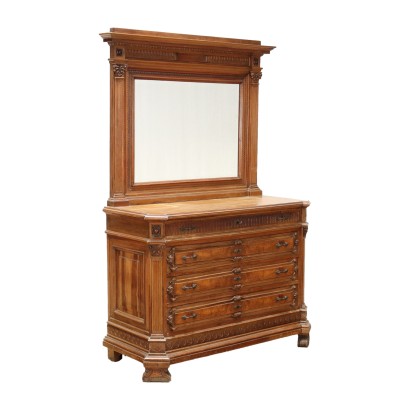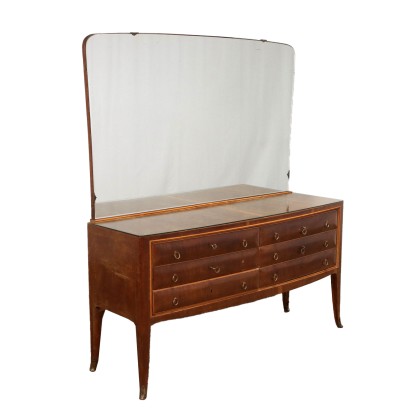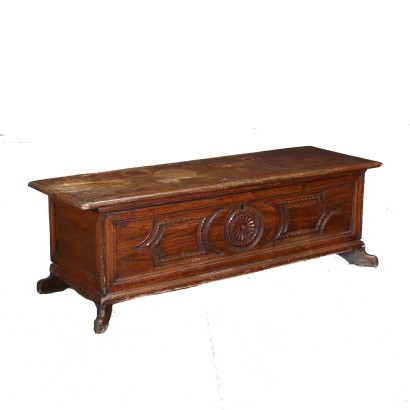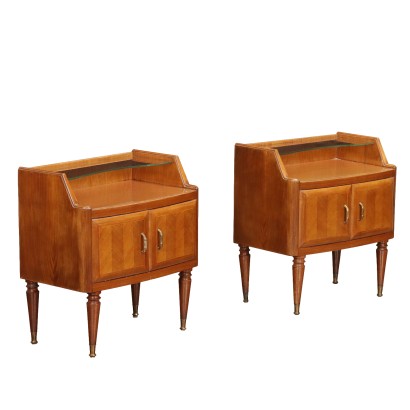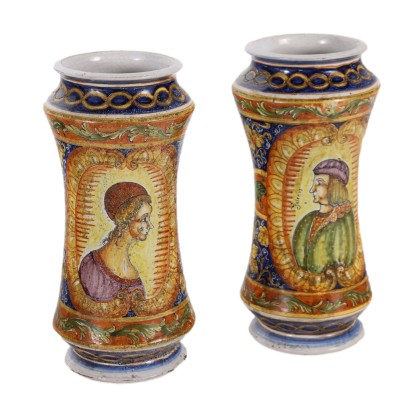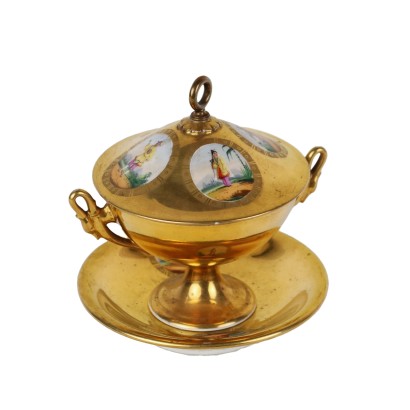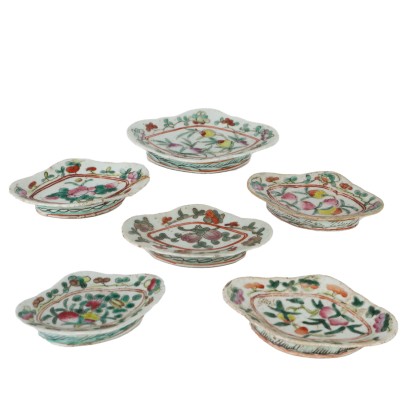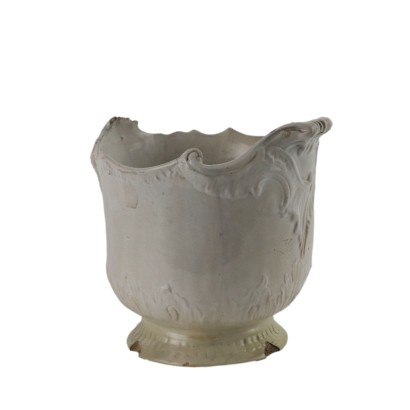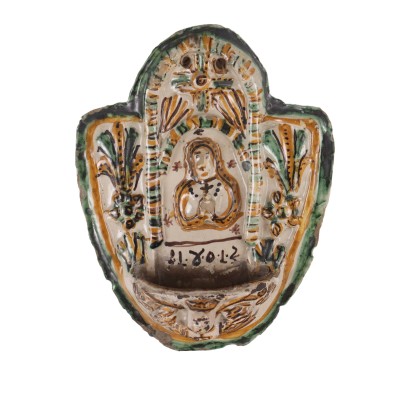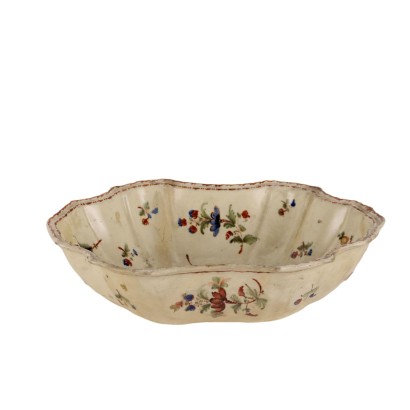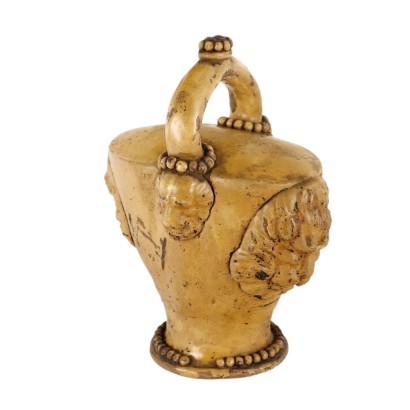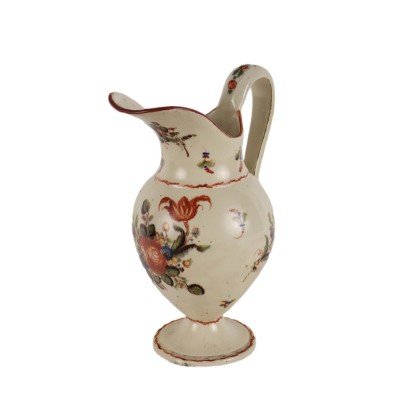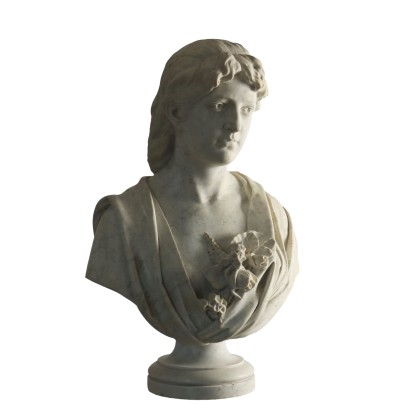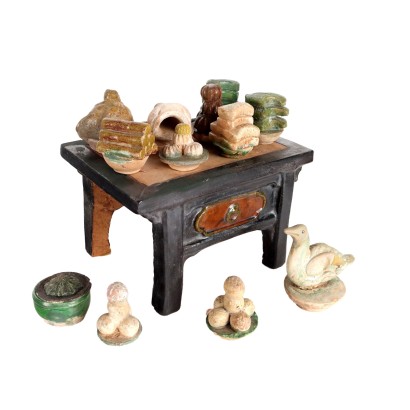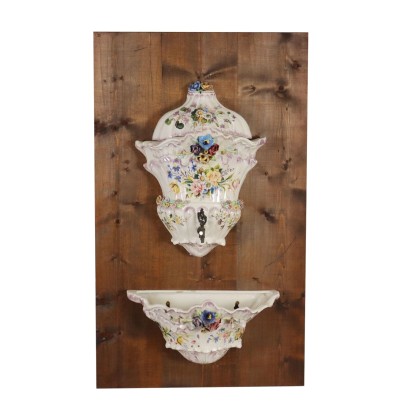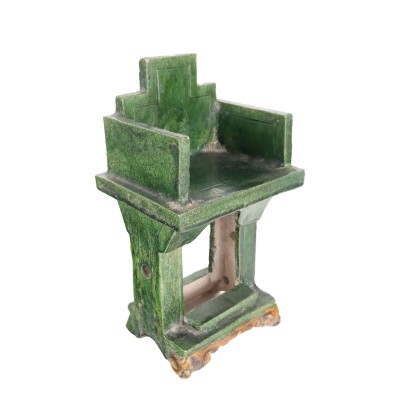Chest of Drawers Neo-Renaissance Style Walnut Italy XX Century - Italy, Early XX Century
Features
Italy, Early XX Century
Style: Neo-Renaissance Revival
Age: 20th Century / 1901 - 2000
Origin: Italy
Main essence: Walnut
Material: Carved Wood , Mirror
Description
Neo-Renaissance style chest of drawers with mirror in carved walnut, Italy early 20th century. Étagère with bevelled mirror, front with 4 drawers, uprights and feet at 45°, the former embellished with fluted pilasters culminating with carved capitals, paneled sides. Walnut interior.
Product Condition:
Product which due to age and wear may require restoration and re-polishing. We try to present the real state as fully as possible with photos. If some details are not clear from the photos, what is reported in the description will prevail.
Dimensions (cm):
Height: 99
Width: 140
Depth: 61
Maximum size (cm):
Height: 209
Additional Information
Style: Neo-Renaissance Revival
Stylistic revival, from the 1900s, of the forms typical of the Renaissance style.This is a style that re-proposes, looking at the grandeur of the past, decorative motifs and decorations typical of the 1500s.
Mascheroni, cornices, columns carved with herms that make up typical architectural structures of Renaissance palaces, are the elements that characterize the Neo-Renaissance style.
These elements will remain in the production of furniture until the early 1900s, contaminating themselves with floral elements.
Find out more about the Neo-Renaissance with our insights:
A Milanese library between the Belle Epoque and Fascism



